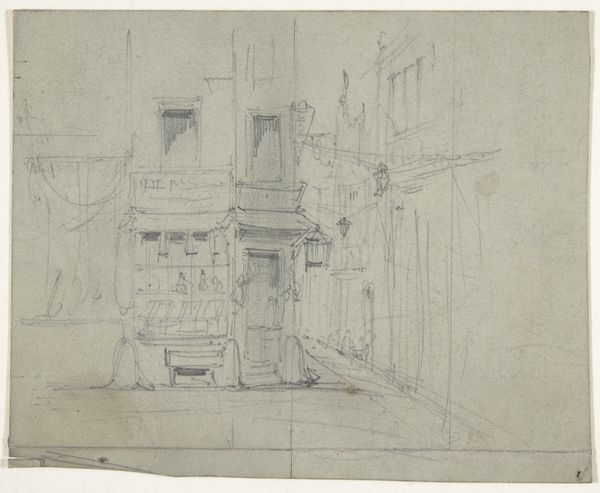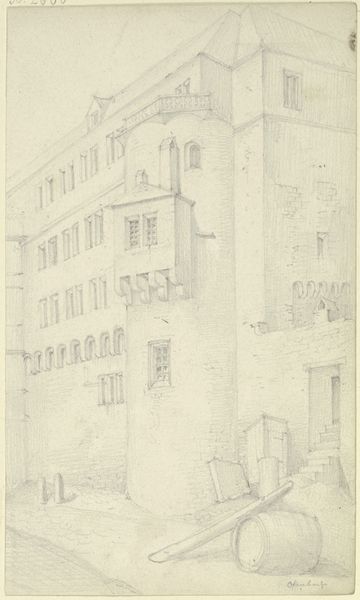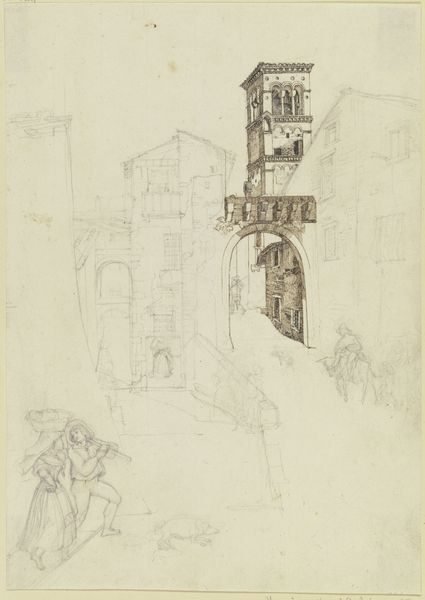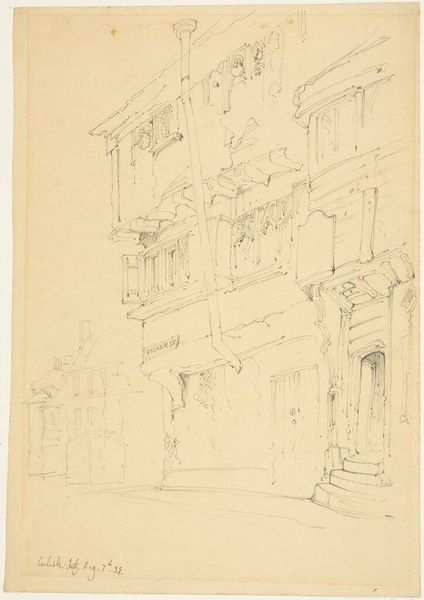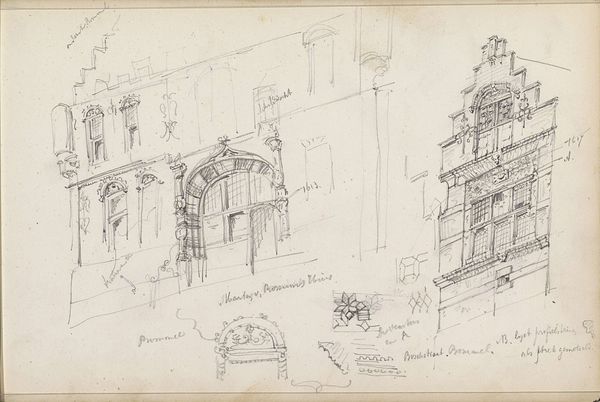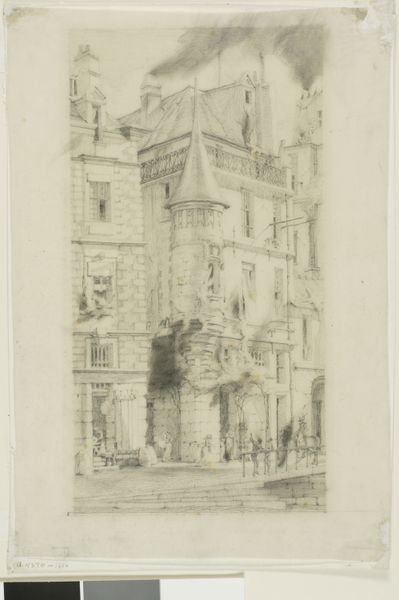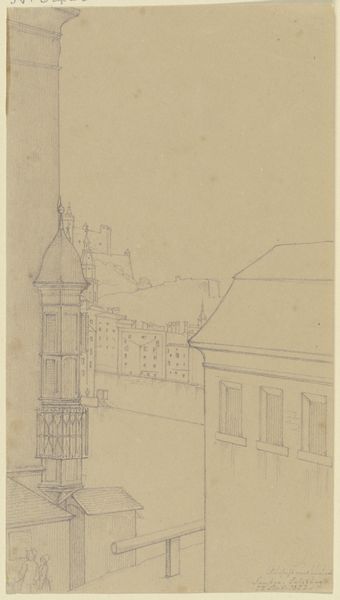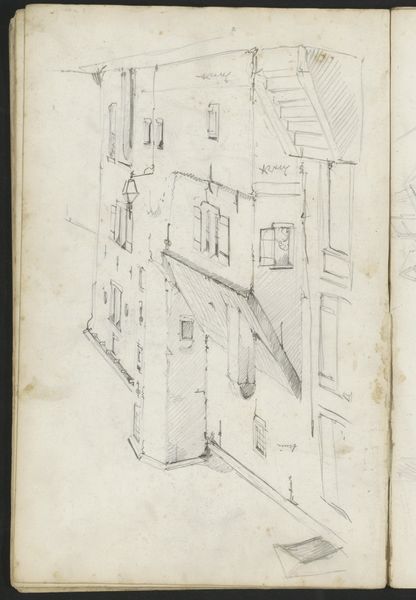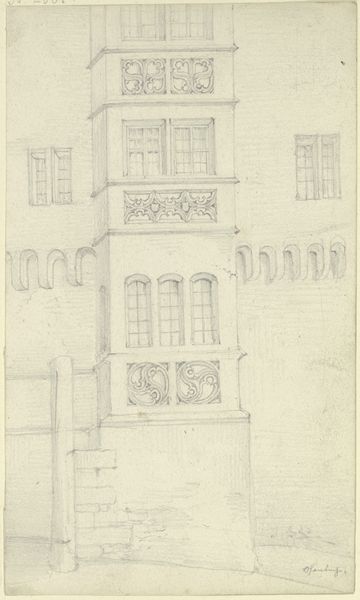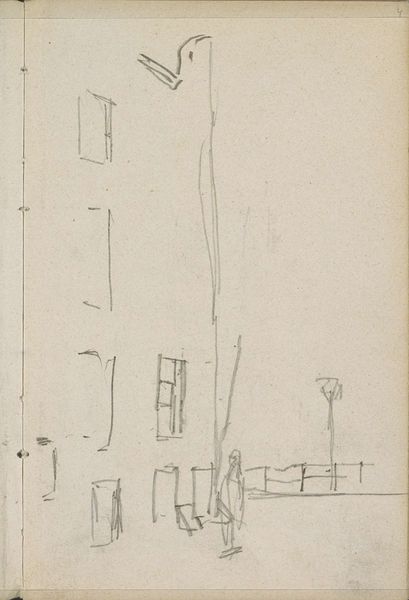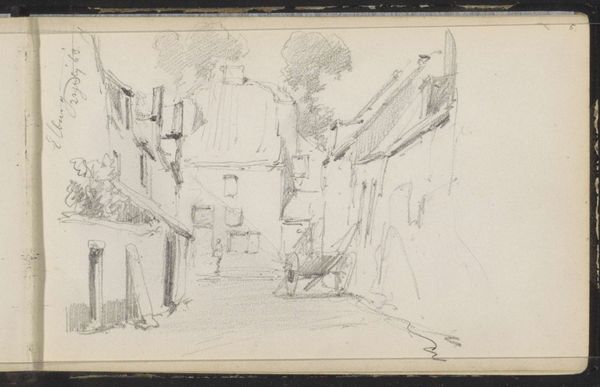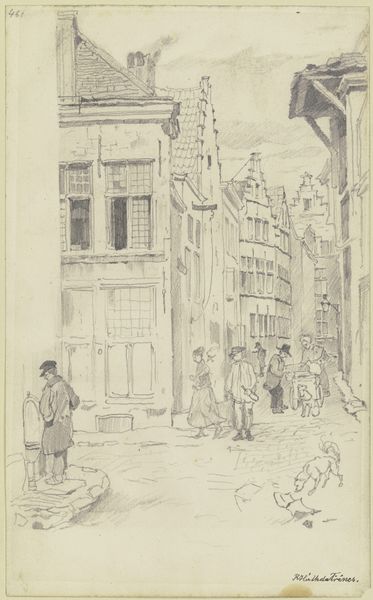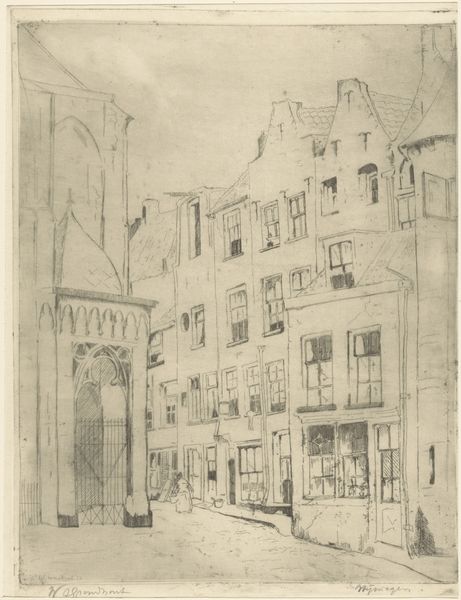
drawing, pencil, architecture
#
architectural sketch
#
drawing
#
aged paper
#
toned paper
#
dutch-golden-age
#
old engraving style
#
landscape
#
etching
#
personal sketchbook
#
sketchwork
#
pencil
#
architectural drawing
#
architecture drawing
#
cityscape
#
storyboard and sketchbook work
#
architecture
Dimensions: height 208 mm, width 159 mm
Copyright: Rijks Museum: Open Domain
Curator: Welcome. Let’s take a look at "Huizen aan de Molensteeg (te Amsterdam?)," a cityscape drawing by Andries Schouten, dating from 1700 to 1800. The medium appears to be pencil on toned paper. Editor: It’s ethereal. Ghostly even. The lines are so faint, the whole composition seems on the verge of disappearing. It almost feels like a memory of a place, rather than a depiction. Curator: Note the composition: the intersection of architectural forms creates a complex interplay of vertical and horizontal lines, culminating in the gable at the top of the main building. It creates a very rigid structure. This geometric structure lends an undeniable clarity to Schouten's statement, despite its delicacy. Editor: And look at the signage, that elaborate hanging sign. Amsterdam was, and is, such a center of commerce. Wouldn't it be fascinating to know what the building it advertises stood for? Also, the gas lamp further up! It evokes such a specific era in the history of the city and the architecture on display. Curator: True, although such a detail might be incidental from my perspective. Focus instead on how the linear quality reinforces the sense of depth and space. He's manipulated perspective expertly using only the weight and density of line. The architectural forms stand alone, in that sense, requiring nothing but an intrinsic formal assessment. Editor: For me, it is more of a map to cultural understanding than the artist likely imagined. These architectural details, carefully rendered, point to a sense of civic pride during the Dutch Golden Age. Each element seems loaded with history, carrying emotional residue of generations who inhabited these spaces. Even that barely rendered figure down at street level...it’s the suggestion of daily life being played out within the constraints of those structures that holds so much charm and resonance for me. Curator: An understandable observation! But I maintain that, irrespective of that resonance, the true measure lies in Schouten’s elegant rendering and articulation of form. That precise use of line! The tonality itself, rendered so perfectly by paper, line, and composition is something to be praised! Editor: And, beyond that elegance, this seemingly simple sketch preserves cultural memory; it’s a portal into the soul of a city at a particular moment. Curator: Well, a useful reminder of how art can engage in ways both structural and symbolic!
Comments
No comments
Be the first to comment and join the conversation on the ultimate creative platform.
